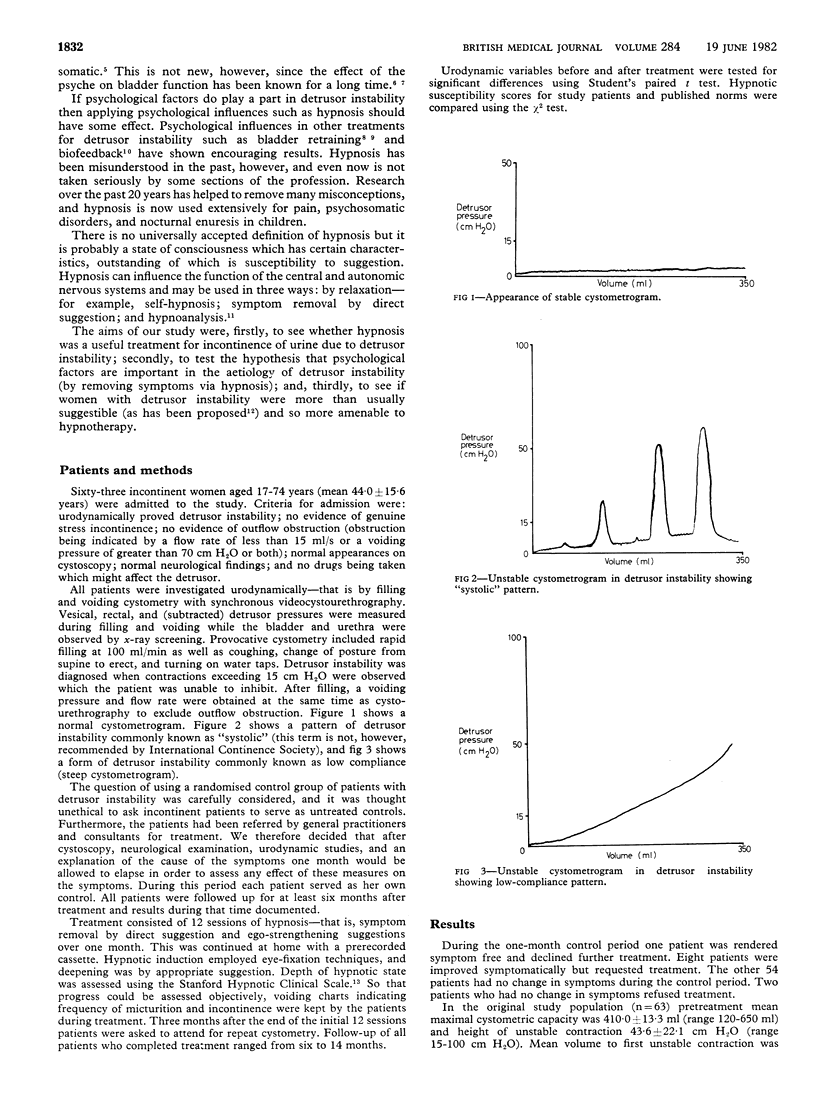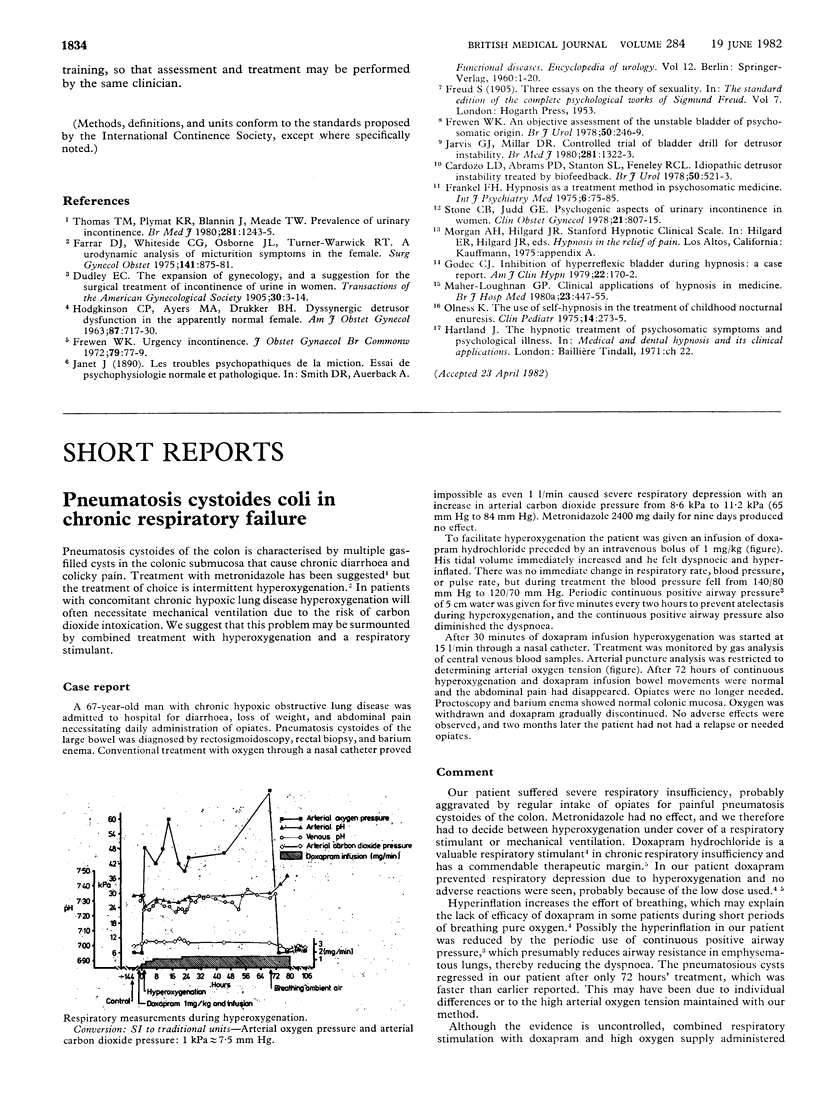Abstract
Fifty incontinent women with proved detrusor instability completed 12 sessions of hypnosis (symptom removal by direct suggestion and "ego strengthening") over one month. This was continued at home with a prerecorded cassette, and all patients were followed up for at least six months. At the end of the 12 sessions 29 patients were entirely symptom free, 14 improved, and seven unchanged. Three months later cystometry in 44 of the patients showed conversion of the cystometrogram to stability in 22 and a significant improvement in a further 16; only six showed no objective improvement. Seven patients relapsed (three after bereavement). Further treatment was given and five out of six patients were rendered symptom free again. Patients with detrusor instability were not found to have a noticeably increased susceptibility to hypnosis. It is concluded that psychological factors are very important in "idiopathic" detrusor instability and that hypnotherapy is effective for incontinence due to this disorder.
Full text
PDF



Selected References
These references are in PubMed. This may not be the complete list of references from this article.
- Cardozo L. D., Abrams P. D., Stanton S. L., Feneley R. C. Idiopathic bladder instability treated by biofeedback. Br J Urol. 1978 Dec;50(7):521–523. doi: 10.1111/j.1464-410x.1978.tb06204.x. [DOI] [PubMed] [Google Scholar]
- Farrar D. J., Whiteside C. G., Osborne J. L., Turner-Warwick R. T. A urodynamic analysis of micturition symptoms in the female. Surg Gynecol Obstet. 1975 Dec;141(6):875–881. [PubMed] [Google Scholar]
- Frankel F. H. Hypnosis as a treatment method in psychosomatic medicine. Int J Psychiatry Med. 1975;6(1-2):75–85. doi: 10.2190/PGAF-EE6Q-WGC5-JXXG. [DOI] [PubMed] [Google Scholar]
- Frewen W. K. An objective assessment of the unstable bladder of psychosomatic origin. Br J Urol. 1978 Jun;50(4):246–249. doi: 10.1111/j.1464-410x.1978.tb02818.x. [DOI] [PubMed] [Google Scholar]
- Frewen W. K. Urgency incontinence. Review of 100 cases. J Obstet Gynaecol Br Commonw. 1972 Jan;79(1):77–79. doi: 10.1111/j.1471-0528.1972.tb15754.x. [DOI] [PubMed] [Google Scholar]
- Godec C. J. Inhibition of hyperreflexic bladder during hypnosis: a case report. Am J Clin Hypn. 1980 Jan;22(3):170–172. doi: 10.1080/00029157.1980.10403221. [DOI] [PubMed] [Google Scholar]
- HODGKINSON C. P., AYERS M. A., DRUKKER B. H. DYSSYNERGIC DETRUSOR DYSFUNCTION IN THE APPARENTLY NORMAL FEMALE. Am J Obstet Gynecol. 1963 Nov 15;87:717–730. [PubMed] [Google Scholar]
- Jarvis G. J., Millar D. R. Controlled trial of bladder drill for detrusor instability. Br Med J. 1980 Nov 15;281(6251):1322–1323. doi: 10.1136/bmj.281.6251.1322-a. [DOI] [PMC free article] [PubMed] [Google Scholar]
- Maher-Loughman G. P. Clinical applications of hypnosis in medicine. Br J Hosp Med. 1980 May;23(5):447-8, 453-5. [PubMed] [Google Scholar]
- Olness K. The use of self-hypnosis in the treatment of childhood nocturnal enuresis. A report on forty patients. Clin Pediatr (Phila) 1975 Mar;14(3):273-5, 278-9. doi: 10.1177/000992287501400316. [DOI] [PubMed] [Google Scholar]
- Stone C. B., Judd G. E. Psychogenic aspects of urinary incontinence in women. Clin Obstet Gynecol. 1978 Sep;21(3):807–815. doi: 10.1097/00003081-197809000-00016. [DOI] [PubMed] [Google Scholar]
- Thomas T. M., Plymat K. R., Blannin J., Meade T. W. Prevalence of urinary incontinence. Br Med J. 1980 Nov 8;281(6250):1243–1245. doi: 10.1136/bmj.281.6250.1243. [DOI] [PMC free article] [PubMed] [Google Scholar]


